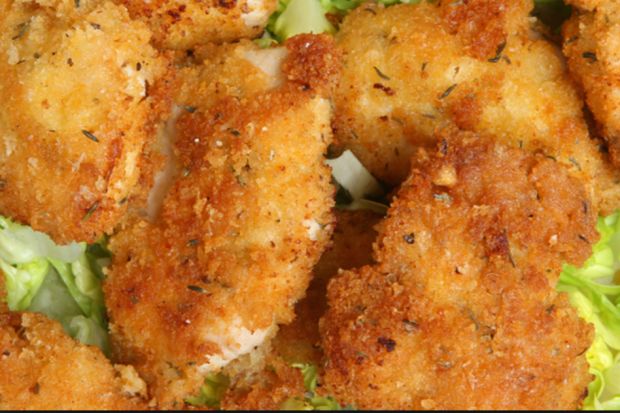Definition
Food pollution is generally defined as the presence in food or associated with food of toxic chemicals (elements or compounds) and/or biological contaminants which are not naturally present in food or are above their natural background levels (for those chemicals which are naturally found in some foods).
Effects of Food Pollution
Food pollution can affect each of us by causing mild to severe food illnesses or, worse, contributing to or causing the development of serious health problems such as hormonal and metabolic problems, or even various types of cancer. Nervous system problems may also be induced by food polluted with certain pesticides. Additionally, in rare cases when highly polluted food is consumed, serious food poisoning or death may occur almost immediately. Food contamination can trigger anything from a small discomfort to life-threatening diseases. On average, more than 70 million cases of food-borne illnesses occur in the U.S. every year, resulting in approximately 5,000 deaths per year!
Causes of Food Pollution
There are numerous causes of food pollution. Basically, any pollutant that comes in contact with food has the potential to pollute it. Various vegetables may get contaminated with toxic bacterial strains (from irrigation water, groundwater, or soil) which may only be destroyed by processing the polluted food at high temperatures. Toxic chemicals can also get into the food in a variety of situations, including:
- growing of food (e.g. crops, fruits, vegetables) in polluted soils, solid wastes (e.g. mine tailings) or areas with polluted groundwater;
- irrigation of grown food (e.g. vegetables, fruits, crops) with polluted water;
- growing of food (e.g. crops, fruits, vegetables) in areas with polluted air;
- agricultural treatments with pesticides, insecticides, and/or herbicides;
- agricultural application of sewage sludge and/or polluted fertilizers (which contain ash from power plants);
- consumption of polluted water and/or food by fish or other animals;
- food processing, packaging, and handling;
- propagation and concentration of pollutants through the food chain.
The fact that plants (vegetables, crops, or trees) become contaminated with pollutants from the environment comes from the ability of plants to extract environmental pollutants through their roots, along with water and nutrients. In the case of air pollutants, those usually enter plants also through roots, after being first deposed on the ground with precipitation water. This is why some plants (non-edible species) are actually used to remediate little to moderately polluted soil by extracting pollutants from soils (an innovative remediation called phytoremediation).
Sources of Food Pollution
The sources of food pollution are numerous and hard to identify or exclude from our daily environment. They include various chemicals and/or microorganisms that get into contact with food during the growing, processing or packaging stages. Basically, any existent environmental pollutant might get into our food, one way or another. Thus, any of the sources polluting the air, water, and soil may also become sources of food pollution. Additionally, animal fodder contains antibiotics and potentially toxic chemicals that may be retained into animals (which later on become human food).
Food Pollution Risks
Food pollution risks depend on a variety of factors, including:
- Type of pollutant – while any pollutant present in food may pose a health risk, the pollutants that are persistent and bioaccumulative are those that pose the higher risks because they may accumulate in food over time resulting in concentrations much higher than in a surrounding environment (e.g., accumulation of persistent chemicals such as organomercurial compounds or PCBs in fish). Hormones in food may also pose serious risks that are still uncertain. For example, contamination of cow milk with an artificial hormone (rBGH) used to increase milk production may be linked to some types of cancers in humans. Thus, a safe alternative is to avoid, if possible consumption of food with hormones.
- Type of food – fish are more dangerous than other food due to their potential exposure to a higher variety of contaminants and the accumulation and concentration of certain compounds in fish. Also, any bird or animal consuming polluted fish may become contaminated itself and thus transmit the pollution further through the food chain.
- Each individual person’s health – children, elderly, as well as pregnant women are usually more sensitive to food pollution. So are people with chronic food diseases or illnesses, for which food pollution risks are higher. However, healthy individuals may also develop food-poisoning diseases and anyone may be at risk.
How Does Pollution Affect the Food Web?
Pollution from the environment (soil, sediments, water, and air) gets into the food web by polluting plants or animals that come in contact with environmental pollution. For example, water pollution may accumulate and concentrate in fish. Fish may be consumed by birds and other animals and the pollution gets transferred through the food chains until it reaches humans. By the time the polluted meat or fish reaches humans, the pollution may be substantially increased compared to the original concentration. Thus, human intoxication cases may be serious.
Safe Food Alternative
An alternative that may ensure production of less polluted food was recently proposed in Japan. Thus, it was proposed to grow vegetables in factories which would eliminate the unpredictable effect of environmental pollution, unpredictable weather, or pests. The process would be all computerized, controlling various factors affecting growth. This safe food alternative is proposed by the Ozu Corporation in Tokyo. Would this constitute the future of agriculture? Only time will tell… In the meantime, we are still dealing with food grown on dirty land subjected to various food pollutants, pests, and unpredictable weather! Food pollution risks are everywhere and all we can do is minimize individual exposure to polluted food by informing ourselves and taking action.

